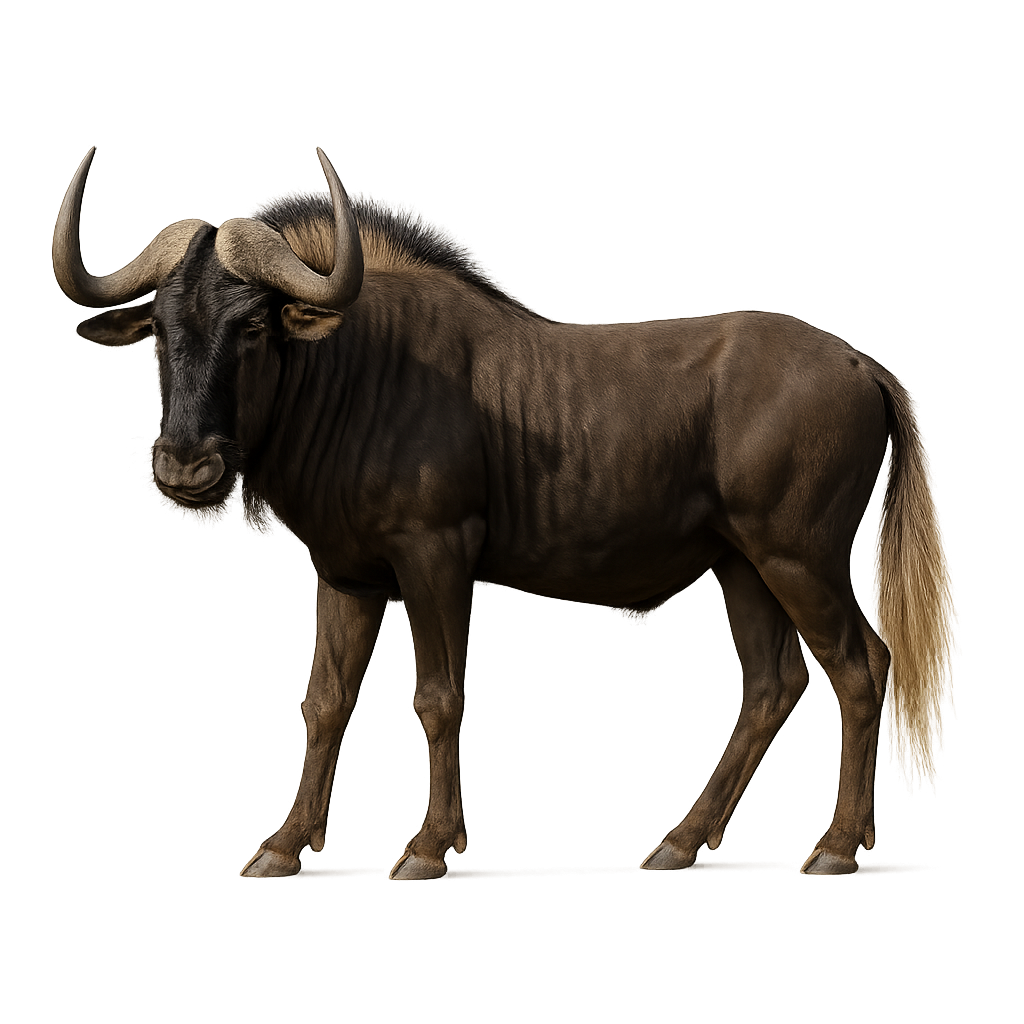Your wildlife photography guide.
Explore the black wildebeest in detail, study its behavior, prepare your shots.
Where to observe and photograph the black wildebeest in the wild
Learn where and when to spot the black wildebeest in the wild, how to identify the species based on distinctive features, and what natural environments it inhabits. The WildlifePhotographer app offers tailored photography tips that reflect the black wildebeest’s behavior, helping you capture better wildlife images. Explore the full species profile for key information including description, habitat, active periods, and approach techniques.
Black Wildebeest
Scientific name: Connochaetes gnou

IUCN Status: Least Concern
Family: BOVIDAE
Group: Mammals
Sensitivity to human approach: Suspicious
Minimum approach distance: 50 m
Rut period: February to March
Gestation: 240-255 jours
Births: October to December
Habitat:
Open grasslands of Southern Africa
Activity period :
Primarily active during the day, with peak activity in the morning and late afternoon.
Identification and description:
The Black Wildebeest is a large herbivorous antelope, easily recognizable by its robust build and massive head. It stands about 1.3 to 1.5 meters at the withers and weighs between 150 and 250 kg, with males generally being larger and heavier than females. Its coat is a deep black, with white markings on the throat and legs, and a black mane that distinguishes its neck. The Black Wildebeest is particularly known for its curved horns, which can reach up to 80 cm in length. It primarily inhabits the savannas and grasslands of West and Southern Africa, notably in Senegal, Namibia, and Botswana. Herbivorous, it primarily feeds on grasses and other herbaceous vegetation. The Black Wildebeest often lives in large groups, which helps protect it from predators. While the species is not endangered, it is threatened by habitat loss and climate change, which alters its living conditions.
Recommended lens:
300 mm – adjust based on distance, desired framing (portrait or habitat), and approach conditions.
Photography tips:
Approach slowly and quietly, using a telephoto lens to avoid disturbing the wildebeest, a social animal that can quickly flee if alarmed.
Photograph early morning or late afternoon, when soft light enhances their activity—often seen moving or grazing in large herds across open grasslands.
Capture natural behaviors like group movement, feeding, or social interactions—great for dynamic shots.
Be patient and respectful: even though common, do not interfere with their natural behavior.
IUCN status: Least Concern. Respect their habitat and follow local conservation rules.
The WildlifePhotographer App is coming soon!
Be the first to explore the best nature spots, track rutting seasons, log your observations, and observe more wildlife.
Already 1 430 wildlife lovers subscribed worldwide

